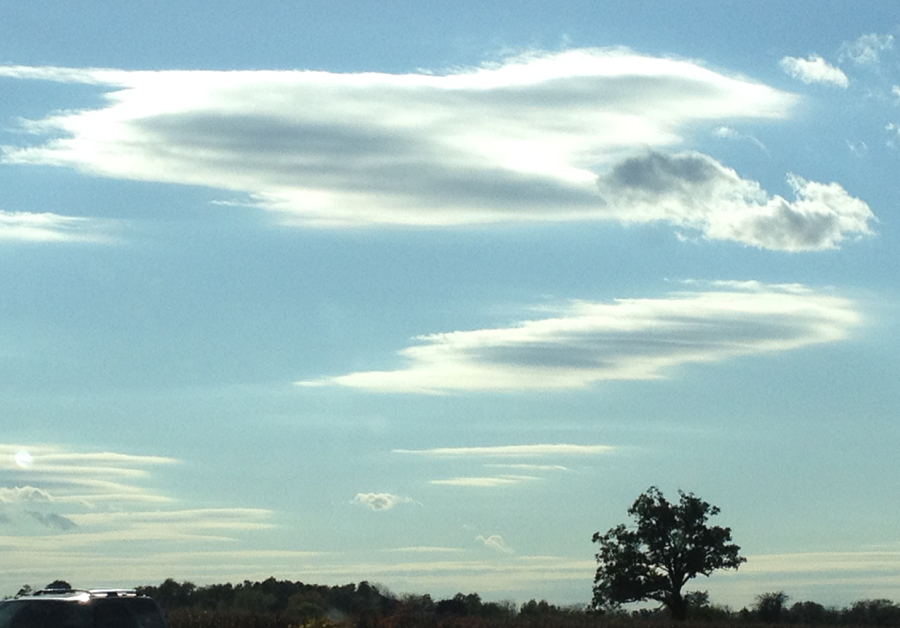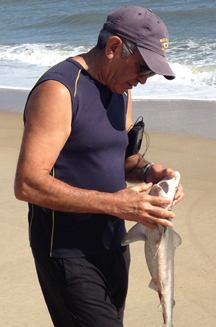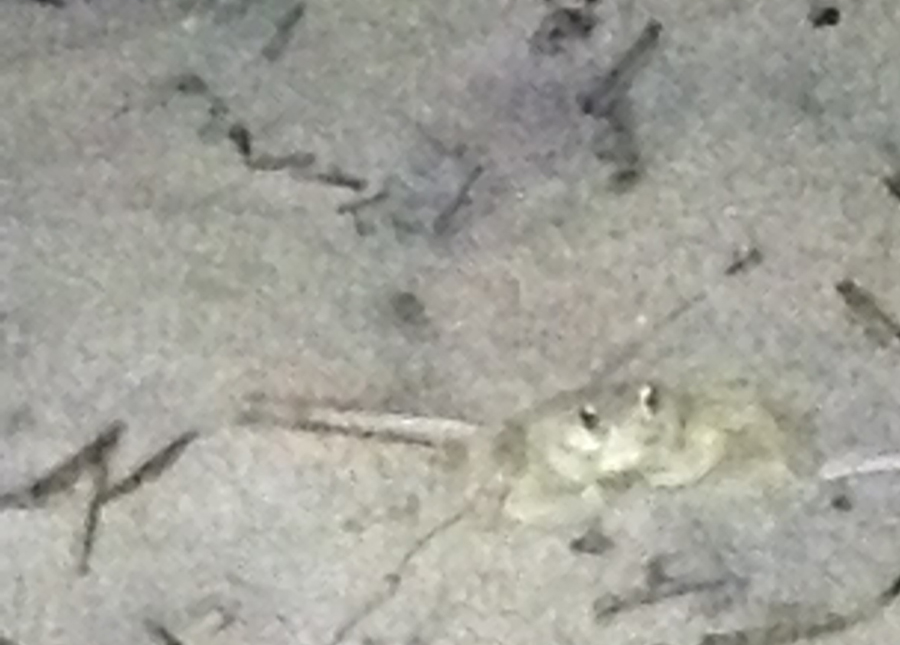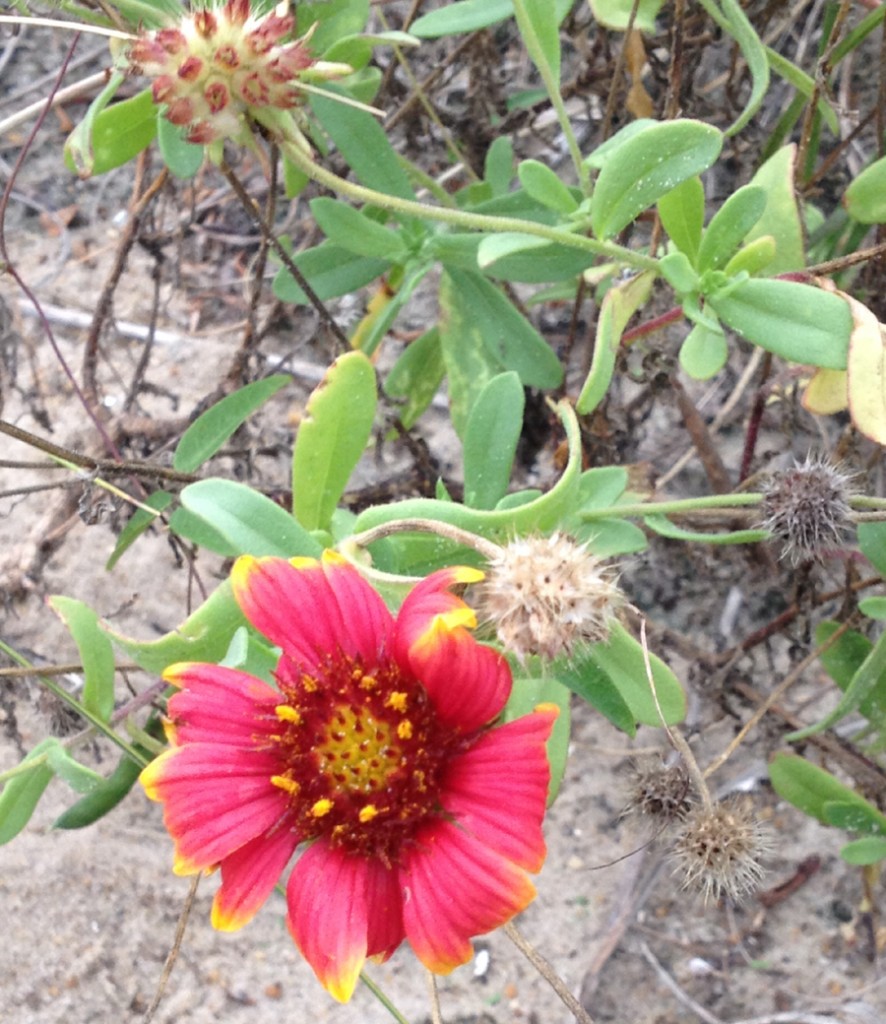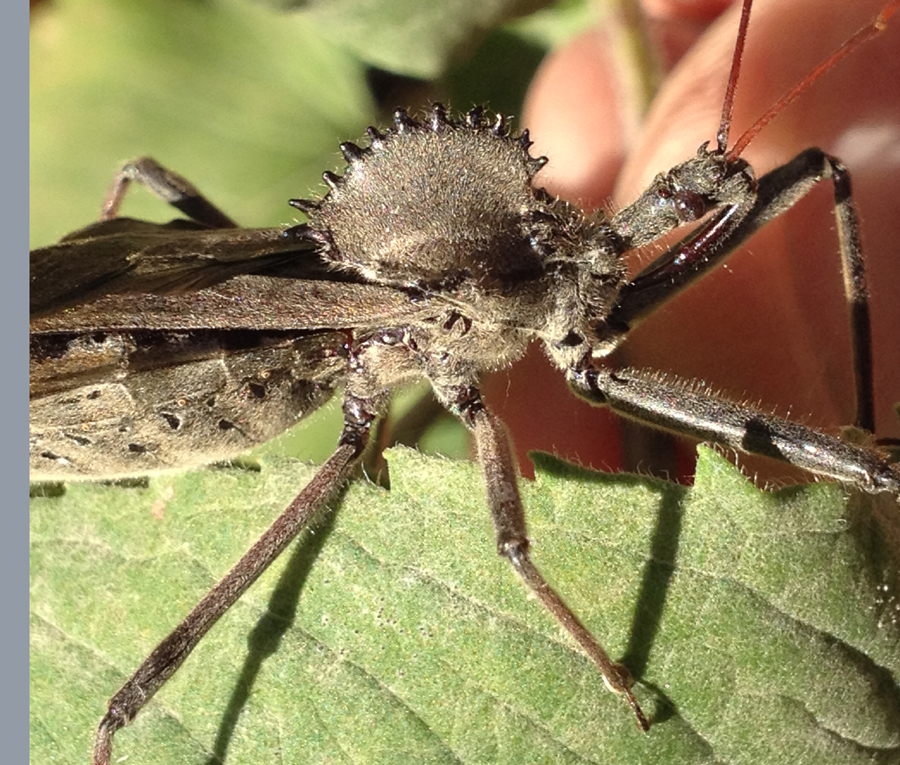This fall the Ocean-side waves were too threatening for sailing or swimming all week long. Hatteras is aptly called “The Graveyard of the Atlantic”.
Even the skies seem appropriately threatening.
When the sun shone it all looked much more inviting.
A small shark washed up on the beach.
Marcus found that it had died from a fish lure lodged deep in its throat.
By day, you see many small holes in the sand.
By night the crab occupants come out, but they are still not easy to catch.
I wonder who eats them?
In the sand dunes this moth has evolved great camouflage to blend with the colors to avoid being eaten.
While this wild flower needs all the color it can muster to attract scarce pollinators.
On the sound side of the dunes (where we windsurf) the scene seems more peaceful,
This luminous green fly is a good contender for the Best Dressed Bug contest.
I don’t know if it is eaten by this magnificent large spider we found living in the reeds.
The female “Black and Yellow Argiope” (thanks Carol for ID) is 1 ½” (35 mm) long. She (not Carol!) eats her web (plus contents I presume) every night, and next morning spins a new one.
This one cormorant stopped for preening and was close enough for a photo.
Many, many thousands of these birds stream by every day, low over the water, sometimes diving en masse for fish, while flying south to some unknown destination which must be unimaginably crowded if they all congregate there together. (I now read that deep diving cormorants, mergansers and loons are dying in Lakes Michigan and Huron from a Type E botulism which they may be eating from the lake bottom)
On the water were kite boards and windsurfers. Jim’s amazing GoPro waterproof, high resolution cameras attached to the end of my windsurf boom reveal some of the tensions and subtleties involved when you try to connect with foot straps and harness, while riding the wind and the waves. At first it seems the foot straps are never where my feet are, but then later I find the straps actually are perfectly located. The harness is another matter: hooking in and out should be effortless, provided it’s properly adjusted – and you must always avoid accidentally hooking in when you should be out!
Footstraps and Harness (not stabilized).
The road back to Ohio goes past Kitty Hawk, where you can appropriately pay homage to the Wright brothers by taking hang glide lessons – very tempting. It would be good to try it one day with a GoPro.
Back home in Perrysburg this bug landed on my Prodigy board and showed me it has evolved a pretty good helmet to protect at least its shoulders from being eaten. I see now it is called a “Wheel bug” (Arilus cristatus). Very good to have in your garden as it devours aphids and others who’d eat your flowers and vegetables. But beware, while not easily provoked, it does have a very nasty bite. It injects digestive enzymes into its prey so it can more easily suck out the nutritious innards. Perhaps that’s what makes it so painful for humans.
And in the honey bees’ hive I found some of these tiny ants on the comb. Presumably their giant stinger gives them some protection from the much larger bees.


